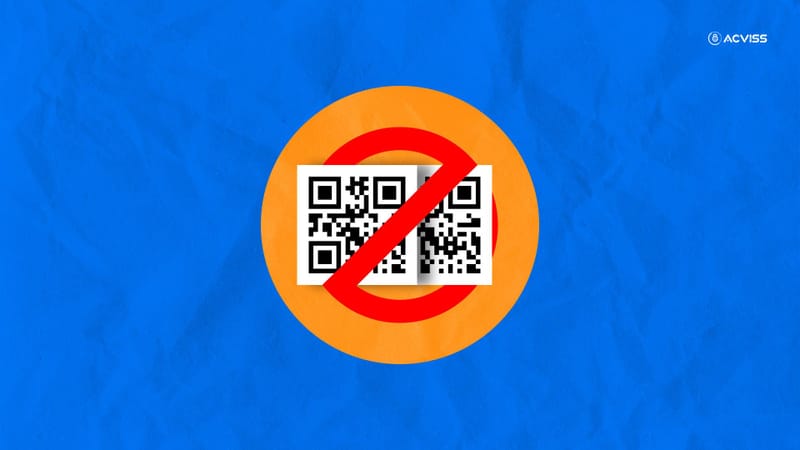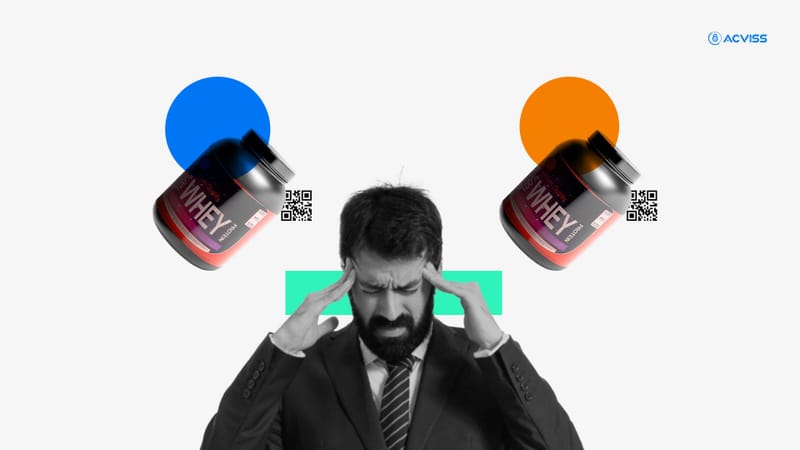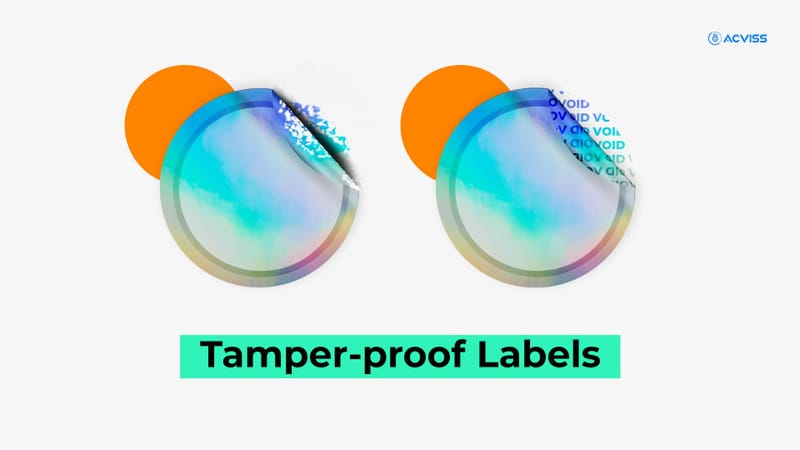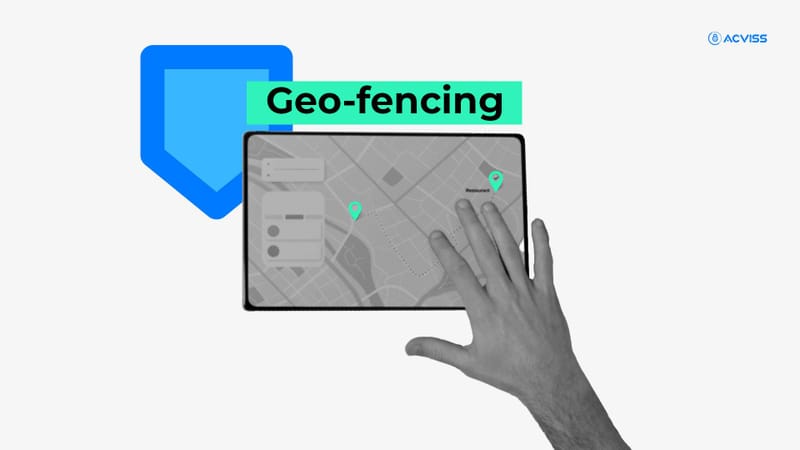Securing Your Business - Strategies to Prevent QR Code Duplication

Maintaining client confidence and brand reputation in the digital world depends on the quality you offer and the security you provide. Businesses have to guard their assets from several sources, including the growing problem of QR code duplication, given their increasing dependence on technology. Strong security policies are very crucial, as this kind of counterfeiting may mislead customers and compromise the image of a company.
Two-dimensional barcodes called QR codes—also known as Quick Response codes—store data in a pattern of black squares set on a white backdrop. Originally created in Japan in 1994, their capacity to save vast amounts of data—including URLs and product information—has helped them to become somewhat well-known. But their simplicity of reproduction raises serious concerns. Therefore, sophisticated anti-counterfeiting solutions are needed to guarantee authenticity and guard companies from fraud.
Understanding QR Code Duplication
Duplication of QR codes is the unauthorised replication of approved QR codes, therefore enabling counterfeiters to deceive customers by pointing them to fake websites or goods. This approach compromises the reputation of companies depending on QR codes for consumer involvement and product validation.
Common Methods of QR Code Duplication
Common techniques of QR code replication include printing copies of original codes, placing false QR stickers over real ones, and generating similar-looking designs utilising fundamental design tools. Because creating QR codes is simple, fraudsters may take advantage of this to create fake versions devoid of advanced technology.
Impact of Duplicated QR Codes on Businesses

Duplicated QR codes may harm companies severely. Along with harm to brand reputation and a loss of client trust, it may cause major financial losses. Legal challenges might also be presented to companies should customers suffer from fake goods. Maintaining supply chain security and brand integrity so depends on combating QR code duplicity.
Strategies to Prevent QR Code Duplication
The problem of QR code duplication has become urgent as companies use QR codes for consumer interaction and product verification more and more. Maintaining customer confidence and brand reputation depends on putting sensible plans into action to stop this problem. These are some crucial tactics to give thought to:
1. Using Anti-counterfeiting Solutions:
Provides a unique, non-cloneable QR code integrated into the product packaging. A simple scan of the QR code with a smartphone lets customers confirm the legitimacy of goods. Should a fake product be discovered, the company and the buyer are informed to guarantee a quick response.
Conversely, a blockchain-integrated track-and-trace system that offers real-time supply chain movement of product views. Leveraging blockchain technology can help companies guarantee that every product's path is documented and traceable, thereby making it rather tough for counterfeiters to get false goods into the market.
2. Tamper-proof Labels:

Another key tactic for preventing QR code copying is tamper-proof non-cloneable labelling. These labels clearly indicate that a product has been hacked as they are especially designed to display obvious indicators of tampering should they be taken off. Using tamper-proof labelling not only discourages counterfeiters but also convinces consumers they are getting real goods. Highly resistant to duplication and manipulation, Acviss's anti-counterfeit labels use proprietary technology combining sophisticated inks with printing processes.
3. Product Serialization and Authentication:
The prevention of QR code duplication depends critically on product serialisation and verification. Assigning distinct serial numbers to every product allows companies to monitor and verify goods all along the supply chain. This approach improves product traceability and facilitates the rapid identification of counterfeit items.
By enabling flawless integration of serialisation into current systems, Acviss's solutions help companies keep a comprehensive record of every product's path. This degree of traceability improves operational efficiency and helps fight counterfeiting.
4. Track and Trace Solutions:
Improving supply chain security and efficiency depends on tracking and implementing traceable solutions. From manufacture to distribution, these technologies provide companies with the means to keep an eye on their goods at every level of the supply chain. Acviss's track and trace features use cutting-edge technology to guarantee openness and responsibility, therefore enabling companies to react fast to any suspected behaviour. Maintaining control over product movements helps businesses significantly reduce the dangers related to QR code duplication and counterfeiting.
5. Geo-fencing Solutions:

Geo-fencing solutions use location-based technology to improve security and stop unauthorised access to private supply chain locations. Businesses may get warnings when unauthorised people or vehicles enter virtual limits they have set around important sites, including warehouses or distribution centres. This proactive strategy guarantees that real goods stay safe throughout the supply chain and helps to reduce the possibility of product diversion. Combining geo-fencing with QR code technology can improve security protocols even further and provide another degree of protection against counterfeiting.
Acviss Real-World Implementations
Case Study 1: Enhanced Product Authentication in the Construction Sector
Kitply, a prominent plywood manufacturer, implemented Acviss’s proprietary QR code solutions with unique modulation codes integrated into their packaging. This initiative significantly reduced counterfeit issues and improved customer confidence by ensuring product authenticity.Case Study 2: Premium Brand Protection for Cosmetics
A luxury cosmetics brand leveraged Acviss’s track-and-trace systems and tamper-proof labels to secure its supply chain. Within one year, counterfeit claims dropped by 60%, reinforcing consumer trust and protecting brand integrity.
Key Takeaways
- Critical Need for QR Code Security: In today’s digital landscape, where QR codes are widely used for customer engagement and product authentication, preventing QR code duplication is crucial to safeguard brand reputation and maintain customer trust.
- Primary Threats of QR Code Duplication: Counterfeiters can easily duplicate QR codes, redirecting consumers to fake sites or imitating authentic products, which can severely damage a brand’s image and erode customer confidence.
- Effective Anti-Counterfeiting Strategies: Using anti-counterfeiting solutions like tamper-proof labels, product serialization, track-and-trace, and geo-fencing significantly enhances security, helping to prevent duplication and ensure product authenticity.
Conclusion
Ultimately protecting your company from QR code duplication is a top concern today. Adopting a complete brand protection strategy comprising anti-counterfeiting solutions, tamper-proof labels, product serialisation and authentication, track-and-trace solutions, and geo-fencing technologies will help you drastically reduce the risk of counterfeiting and protect your brand's reputation. Acviss is dedicated to providing creative ideas that enable companies to maintain consumer loyalty and defend their goods.
If you want to learn more about how Acviss could assist in protecting your business get in touch with us for a consultation. Let's make sure your brand stays trusted and protected in the continuously changing landscape of counterfeiting.
